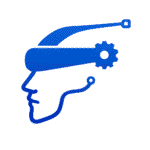Let’s dive into Generative AI step by step, sorting questions into categories for easy learning. Each question is designed to make sense, using examples and comparisons from everyday life. Our goal is to make sure you understand each answer clearly, and see how it works in real life. By organizing our content this way, we make it easier for you to understand how Generative AI is used in different areas.
Transformer Architecture
Question: What is the Transformer architecture?
Answer: The Transformer is a type of neural network used for processing sequences of data, such as sentences. It uses a mechanism called self-attention to focus on different words in a sentence, much like highlighting important words in a text. This helps in understanding context better, leading to more accurate translations and text generation. Examples of Transformer-based models include GPT-3 and BERT.
Question: How do Transformers differ from RNNs and LSTMs?
Answer: Transformers process all words in a sentence at the same time, unlike RNNs and LSTMs which process words one by one. It’s like reading a sentence in one glance instead of word by word. This makes Transformers faster and better at understanding long sentences. They are used in models like BERT and GPT-3 for tasks like translation and text generation.
Question: What is self-attention in Transformers?
Answer: Self-attention is a method where each word in a sentence looks at all the other words to understand its importance. It’s like how we focus on different parts of a sentence to understand its meaning. This helps the Transformer model understand the context and relationships between words better, leading to improved performance in tasks like translation and summarisation.
Question: What are some advantages of the Transformer architecture?
Answer: Transformers can process information faster and handle longer sentences better than older models like RNNs. They are very good at understanding the context of text, which makes them great for tasks like translation, summarisation, and answering questions. For example, Google’s BERT uses Transformer architecture to improve search results by understanding the context of queries better.
Question: How does GPT-3 generate text?
Answer: GPT-3 generates text by predicting the next word in a sequence based on the words that came before it. It uses a neural network with many layers to understand the context and produce coherent text. Think of it as a very advanced autocomplete function that can write entire paragraphs. For example, you give it a topic, and it writes an article on that topic.
Frameworks: LangChain & Hugging Face
Question: What is LangChain?
Answer: LangChain is a framework for building applications that use large language models (LLMs). It’s like a toolkit that helps developers easily create applications that can understand and generate text. A real-world example would be using LangChain to develop a chatbot that helps answer customer questions.
Question: How does LangChain help in building applications?
Answer: LangChain provides tools and libraries that simplify the integration of LLMs into applications. It helps manage data, handle user interactions, and connect to LLMs, much like a set of Lego blocks that you can use to build different structures. This makes it easier and faster for developers to create AI-powered applications, such as a customer service bot that can handle queries.
Question: What is Hugging Face?
Answer: Hugging Face is a company that provides tools and libraries for working with machine learning models, especially in natural language processing (NLP). Think of it as a marketplace where you can find and use various pre-trained AI models. Their platform, Transformers, offers models like GPT-3 and BERT for text generation and analysis.
Question: How does Hugging Face benefit developers?
Answer: Hugging Face makes it easier for developers to access and use powerful AI models without needing to build them from scratch. They provide pre-trained models and a simple interface to use them. For example, a developer can use Hugging Face’s BERT model to improve their app’s text analysis capabilities, such as enhancing a search engine to better understand user queries.
Question: What are pre-trained models in Hugging Face?
Answer: Pre-trained models are AI models that have already been trained on large datasets and are ready to use for various tasks. It’s like getting a pre-assembled furniture set that you just need to put in place. Hugging Face offers many pre-trained models that developers can use for tasks like translation, summarisation, and text generation, making it easier to implement advanced AI features in applications.
Keep learning and exploring! See you in Part 3 of our series, where we’ll continue our journey through Generative AI. Stay tuned for more insights, examples, and exciting discoveries. Happy learning!


Leave a Reply